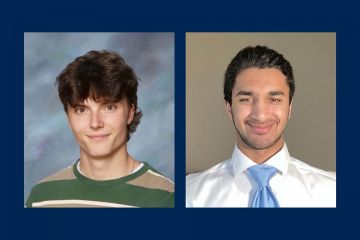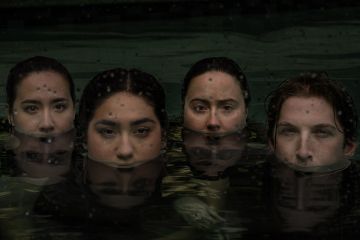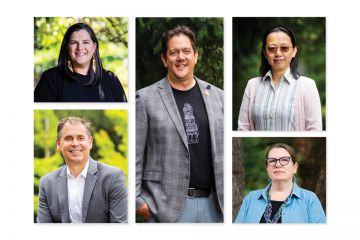UVic Research Team Tests Mind-Reading Device for the Disabled
An ambitious University of Victoria-based research project may one day allow people with severe disabilities to communicate more effectively and independently -- using a system that will literally read their minds.
"It sounds like science fiction and in a sense it is," says Dr. Nigel Livingston, a UVic biologist and chair of the University of Victoria Assistive Technology Team (UVATT), a group of 40 or so researchers from across campus who are volunteering their time and expertise to develop new devices for the disabled.
"There's a huge need in the community for special devices or technology for the disabled, but they're generally not available because they're so expensive to develop," says Livingston. UVATT includes machinists, computer scientists, electrical engineers, biologists, physiologists, psychologists, neuroscientists, technicians, graduate students and an administrative assistant.
Since it was formed in 1999, the group has tackled a half dozen small projects. But one -- "the Claire project" -- has turned into a full-fledged research effort, involving scores of people on and off-campus.
Seventeen-year-old Claire Minkley has a genetic condition similar to cerebral palsy and requires a wheelchair, extensive posture support and assistance with every aspect of daily living. She's unable to speak, write, use a mouse or keep her eyes focused on a book or computer screen for very long. Instead, she uses a letter board to form words, speed-reads large portions of text at a glance, and solves complex math problems in her head.
A straight-A student, Minkley is now completing Grade 12 at Oak Bay High and hopes to one day earn a degree in physics and astronomy at UVic. To do that in a timely way, she'll need a more sophisticated communication system.
The UVATT team is investigating the use of advanced brain-computer interface technology that would allow Claire to communicate by controlling her brainwave patterns. "It's well-known that the human brain routinely gives off low-frequency electrical signals," says Livingston. "If Claire can teach herself to generate signals at certain frequencies, it may be possible to convert them into an efficient communication system."
The technology at the heart of the project is a device known as Cyberlink, developed for the U.S. Air Force to help pilots operate other instruments while flying their planes. The basic Cyberlink system uses two sensors on the forehead that are held in place with a headband. Detected brain signals are amplified, digitized, and run through signal processing software.
"What we're doing is further processing the signal to reject noise from spastic muscle movement and other brain activity," says Livingston. The UVATT team is also placing sensors elsewhere on Minkley's head to see if there's a better site for signal detection. Meanwhile, the challenge for Minkley is to control the strength of her brain's signals. "
"If she can train herself to control at least two signals, then she's on her way to communicating," says Livingston. He visualizes Minkley one day wearing a headset hooked up to a brainwave detection unit and a computer. "Maybe the output could go to a voice synthesizer, so she could essentially talk to us. That's our dream."
-- 30 --
Media contacts
Dr. Nigel Livingston (biology) at 721-7121
John Minkley (Claire\'s father) at 595-7749
Valerie Shore (UVic communications) at 721-7641
In this story
Keywords: uvic, research, te, tests, mindreading, device, disabled




